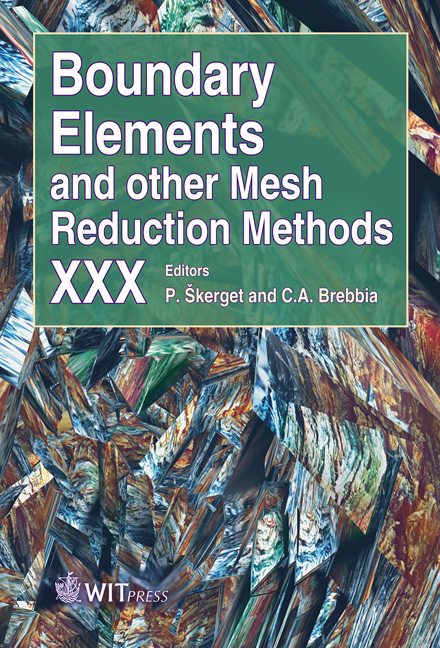3D Multi-spectral Image-guided Near-Infrared Spectroscopy Using Theboundary Element Method
Price
Free (open access)
Transaction
Volume
47
Pages
9
Page Range
239 - 247
Published
2008
Size
361 kb
Paper DOI
10.2495/BE080241
Copyright
WIT Press
Author(s)
S. Srinivasan, B. W. Pogue, K. D. Paulsen
Abstract
Image guided (IG) Near-Infrared spectroscopy (NIRS) has the ability to provide high-resolution metabolic and vascular characterization of tissue, with clinical applications in the diagnosis of breast cancer. This method is specific to multimodality imaging where tissue boundaries obtained from alternate modalities such as MRI/CT, are used for NIRS recovery. IG-NIRS is severely limited in 3D by challenges such as volumetric meshing of arbitrary anatomical shapes and the computational burden encountered by existing models that use the finite element method (FEM). We present an efficient and feasible alternative to the FEM using the boundary element method (BEM). The main advantage is the use of surface discretization, which is reliable and more easily generated than volume grids in 3D and enables automation for large numbers of clinical data-sets. The BEM has been implemented for the diffusion equation to model light propagation in tissue. Image reconstruction based on the BEM has been tested in a multi-threading environment using four processors, which provide 60% improvement in computational time compared to a single processor. Spectral priors have been implemented in this framework and applied to a three-region problem with a mean error of 6% in recovery of NIRS parameters. Keywords: NIR spectroscopy, image guided, boundary element method. 1 Introduction NIR optical imaging has the ability to provide non-invasive functional characterization of tissue relating to its metabolic and vascular status [1]. This yields unique intrinsic information regarding the composition of tissue,
Keywords
NIR spectroscopy, image guided, boundary element method.





